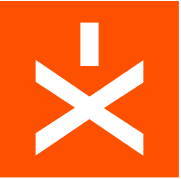The Importance of DVIRs: Ensuring Compliance, Safety, and Cost Savings
Daily Vehicle Inspection Reports (DVIRs) are a crucial part of fleet management, ensuring compliance with Department of Transportation (DOT) regulations, improving vehicle safety, and reducing costly breakdowns. Whether you manage a small fleet or a large trucking operation, maintaining a structured and efficient DVIR process can save you time, money, and hassle in the long run.
DOT Compliance and Reduced Citations
The Federal Motor Carrier Safety Administration (FMCSA) requires commercial motor vehicle operators to complete DVIRs each day. Failure to comply can result in hefty fines and penalties. Properly documented inspections help fleets stay compliant with DOT regulations, avoiding costly citations and legal troubles. By proactively addressing issues found in DVIRs, companies can maintain better compliance records and protect their businesses from regulatory risks.
Lower Repair Costs and Avoiding Over-the-Road Breakdowns
Routine inspections help identify minor issues before they become major problems. Catching and addressing defects early minimizes expensive repairs and helps prevent unexpected breakdowns on the road. Unscheduled roadside repairs often lead to higher service costs, delays in deliveries, and dissatisfied customers. A well-maintained DVIR system ensures that defects are identified and addressed before they escalate into costly problems.
Improved DOT Maintenance Scores
A proactive DVIR process contributes to improved DOT maintenance scores, which are vital for fleet operators. Lower scores indicate better vehicle condition and compliance, reducing the likelihood of roadside inspections and interventions. Strong maintenance records also improve a company’s reputation and can lead to lower insurance premiums.
Maximizing Vehicle Life Cycle and Value
Consistent DVIR tracking helps fleets optimize the life cycle of their vehicles. Regular inspections and timely repairs extend the longevity of fleet assets, ensuring maximum return on investment. By proactively managing wear and tear, companies can maximize resale value, reduce depreciation, and keep vehicles in peak operating condition for longer periods.
Streamlining DVIR Management with Link-X
Managing DVIRs doesn’t have to be a cumbersome, paper-based process. The Link-X mobile app offers fully customized DVIRs, making inspections easy and efficient. Within the Link-X platform, you can seamlessly manage inspections, defect identification, repair orders, completed repairs, and resolved defects—all within an automated workflow. Additionally, Link-X integrates with telematics providers, allowing fleets that use other DVIR solutions to pull in data and centralize all inspection reports in one place.
By leveraging Link-X’s digital DVIR solutions, fleet managers can enhance compliance, streamline maintenance workflows, and ensure that their vehicles remain roadworthy, safe, and cost-effective. Take control of your fleet’s inspections today with Link-X and experience a smarter, more efficient way to manage DVIRs.
